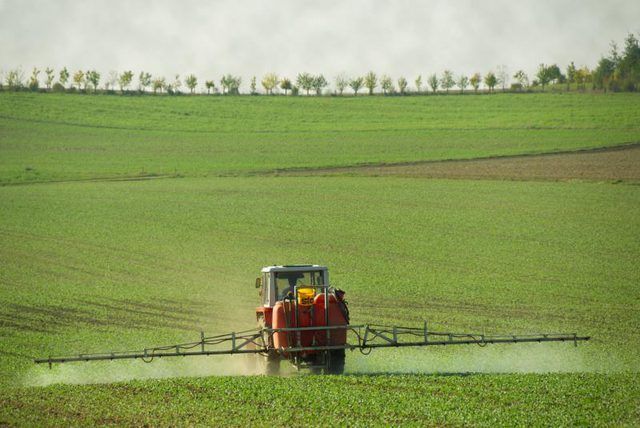Bulbs
Flower Basics
Flower Beds & Specialty Gardens
Flower Garden
Garden Furniture
Garden Gnomes
Garden Seeds
Garden Sheds
Garden Statues
Garden Tools & Supplies
Gardening Basics
Green & Organic
Groundcovers & Vines
Growing Annuals
Growing Basil
Growing Beans
Growing Berries
Growing Blueberries
Growing Cactus
Growing Corn
Growing Cotton
Growing Edibles
Growing Flowers
Growing Garlic
Growing Grapes
Growing Grass
Growing Herbs
Growing Jasmine
Growing Mint
Growing Mushrooms
Orchids
Growing Peanuts
Growing Perennials
Growing Plants
Growing Rosemary
Growing Roses
Growing Strawberries
Growing Sunflowers
Growing Thyme
Growing Tomatoes
Growing Tulips
Growing Vegetables
Herb Basics
Herb Garden
Indoor Growing
Landscaping Basics
Landscaping Patios
Landscaping Plants
Landscaping Shrubs
Landscaping Trees
Landscaping Walks & Pathways
Lawn Basics
Lawn Maintenance
Lawn Mowers
Lawn Ornaments
Lawn Planting
Lawn Tools
Outdoor Growing
Overall Landscape Planning
Pests, Weeds & Problems
Plant Basics
Rock Garden
Rose Garden
Shrubs
Soil
Specialty Gardens
Trees
Vegetable Garden
Yard Maintenance
What Is Urea Fertilizer?
What Is Urea Fertilizer?. When gardens need lots of nitrogen fast, urea fertilizer provides it. At 46 percent nitrogen, urea packs more punch per pound than other nitrogen-only fertilizers. Because nitrogen moves easily through soil -- and plants need it in larger quantities than any other nutrient -- it regularly requires replacement, especially...

When gardens need lots of nitrogen fast, urea fertilizer provides it. At 46 percent nitrogen, urea packs more punch per pound than other nitrogen-only fertilizers. Because nitrogen moves easily through soil -- and plants need it in larger quantities than any other nutrient -- it regularly requires replacement, especially in gardens supporting vegetables or other crops. Urea provides ready nitrogen, but unless handled properly, much of the nitrogen can be lost.
How Urea Is Made
A manufacturing process creates urea fertilizer by combining ammonia gas, known as anhydrous ammonia, with carbon dioxide. High temperatures and pressure aid the chemical reaction that ultimately produces urea. The product is synthetic, but the process imitates the cycle that naturally occurs when mammals metabolize nitrogen in their bodies. The natural process creates ammonia that the liver converts to nitrogen-carrying urea, which the body then excretes. By using similar chemical reactions, manufacturers create the 46-0-0 product that is urea fertilizer.
Urea Applied to Plants
Most gardeners apply urea fertilizer directly to the soil in small pellets, known as prills. The fertilizer dissolves quickly in water, and the slightest soil moisture begins a reaction that converts urea into a compound called ammonium bicarbonate within a few days. It happens fastest at high temperatures or high pH and in sandy soil or soil with low organic matter. In a nod to urea's beginnings, the ammonium converts back to ammonia gas. Unless the gas is conserved, urea can lose 50 percent to 90 percent of its nitrogen to the air.
Nitrogen Preservation
If urea's conversion to ammonium bicarbonate happens in soil instead of air, the ammonia gas and its nitrogen stay in the soil, where plants can use it. To conserve nitrogen and your fertilizer investment, get urea down into the soil as soon as it's applied. The easiest way is to let water do the job. Whether by rainfall or irrigation, as little as 1/4 to 1/2 inch of water moves urea into soil far enough to protect the ammonia gas from air. Lightly tilling urea into your soil has the same effect.
Garden Precautions
With chemical changes under way, soil pH directly around urea rises quickly along with soil ammonia. Until a few days pass, the zone is toxic to germinating seeds and seedlings. Wait to seed, or keep a 2-inch buffer between urea and your seeds. Corn (Zea mays) is particularly sensitive. Though urea pushes pH high at first, it lowers soil pH over time. Like all ammonium-based nitrogen fertilizers, acidity can accumulate in topsoil, especially in no-till gardens. Soil tests keep pH on track. Lightweight, urea catches easily in the wind. Wear gloves, protective clothing and safety eyewear when working with urea fertilizer.